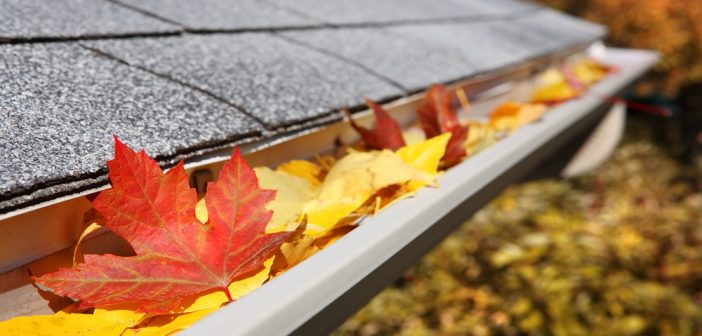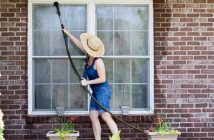Have you been busy doing seasonal maintenance to ensure your home runs smoothly during the fall season? Most homeowners, upgraded their heating system, installed storm windows, cleaned the fireplace and chimney, upgraded the water drainage system and ordered firewood for the season. However, you forgot one thing; the roof. Most people don’t know what is happening to their roofs and this can lead to increased repair or replacement costs.
The National Roofing Contractors Association (NRCA) advises homeowners to conduct regular roof check-ups every fall. Cleaning and repairing your roof now will help safeguard your roof against leaks during the fall season. Roof leaks can warp and break your roof’s underlayment leading to mold growth, which will make your home look old and wearily. If the roof leak becomes an interior problem, you will be forced to repair or replace floor coverings, drywall, or furniture. Conducting a simple roof check-up now will save you time and money in the long run. Here are seven roof maintenance tips that will help you keep your home safe during the fall season.
Trim Trees
Before you check your roof, the first thing you should do is to trim the trees around your house. When a strong wind breaks, tree branches snap and hit your roof. Trimming your trees will also prevent leaves from pilling up on your roof. When leaves pile up on the roof, they tend to collect moisture. This trapped moisture or water seeps into the shingles, and the shingles start to rot. Rotting shingles eventually lead to leaks that can cause damage inside the house. Too many leaves on the roof can also cause weakness in the beams.
Get rid of old trees around your home that can fall on your roof and cause severe damage. Inspect the trees around your home to ensure that they are still alive and aren’t dying or rotting.
External Roof Inspection and Attic Inspection
After trimming your trees, the next step is conducting external roof inspection. Examine your home’s siding and eaves. Check if there are hail dings, external water stains and signs of dry rot. In addition to external roof inspection, it’s advisable to inspect your attic before winter sets in.
Signs of potential roof leaks:
• Mildew or mold around the vents, seams, and joints
• Stained insulation
• Warped wood
If you inspect your attic on a rainy day, you will be able to identify the leaky areas and take the necessary precautions. An attic inspection will help you maintain healthy roofing shingles and extend the life of your roof.
Clean the Gutters
Remove leaves and other debris from your gutters to prevent clogging. If you don’t unclog your gutters, water will spill out of the gutters and can destroy your foundation. Take your time to inspect the gutter carefully and check if there are gaps or breaks in the seams. Make sure that the brackets holding the gutters against your house are strongly and securely attached.
Look for Animal Damage
If an area on or under your roof is weakened by mold growth or rot, it will provide easy access to small animals. These animals will make the existing damages worse.
Look for Signs of Insects
Subterranean termites, carpenter bees, yellow jackets, and carpenter ants are some of the most destructive insects that can ruin your roof. If you live in an area prone to these insects, look for signs of infestation.
Signs of infestation:
• Soft rotten spots
• Shredded wood
• Sawdust
• Insect feces
Ice Dam Prevention
Ice dams are ridges of heavy and thick ice that forms around the edges of the roof during winter. Ice dams can trap more snow, which causes leaks and damage to your ceilings and walls. To prevent ice dams, ensure your attic is properly ventilated. Proper insulating between the rafters will also help you avoid ice dams.
Limit Roof Traffic
Regular foot traffic can make a roof fragile and lead to leaks. If you hang Christmas lights or holiday décor, inspect your roof to make sure you don’t step on shingles that appear weak. Also avoid stepping on roof tiles because these materials are not strong and can be easily damaged.
Remember to take the proper safety precautions when inspecting your roof. Create a plank system that will help you walk on the roof safely. Wear boots and protective clothing. Have a partner to hold the ladder and help you as you examine the roof.
If you see a roofing problem, don’t try to repair it yourself, this will only make the damage worse or create more problems. Call a professional roofing expert to help you repair the damage. When hiring a roofing contractor, ensure that they have the skills and experience required to solve your roofing problem.








